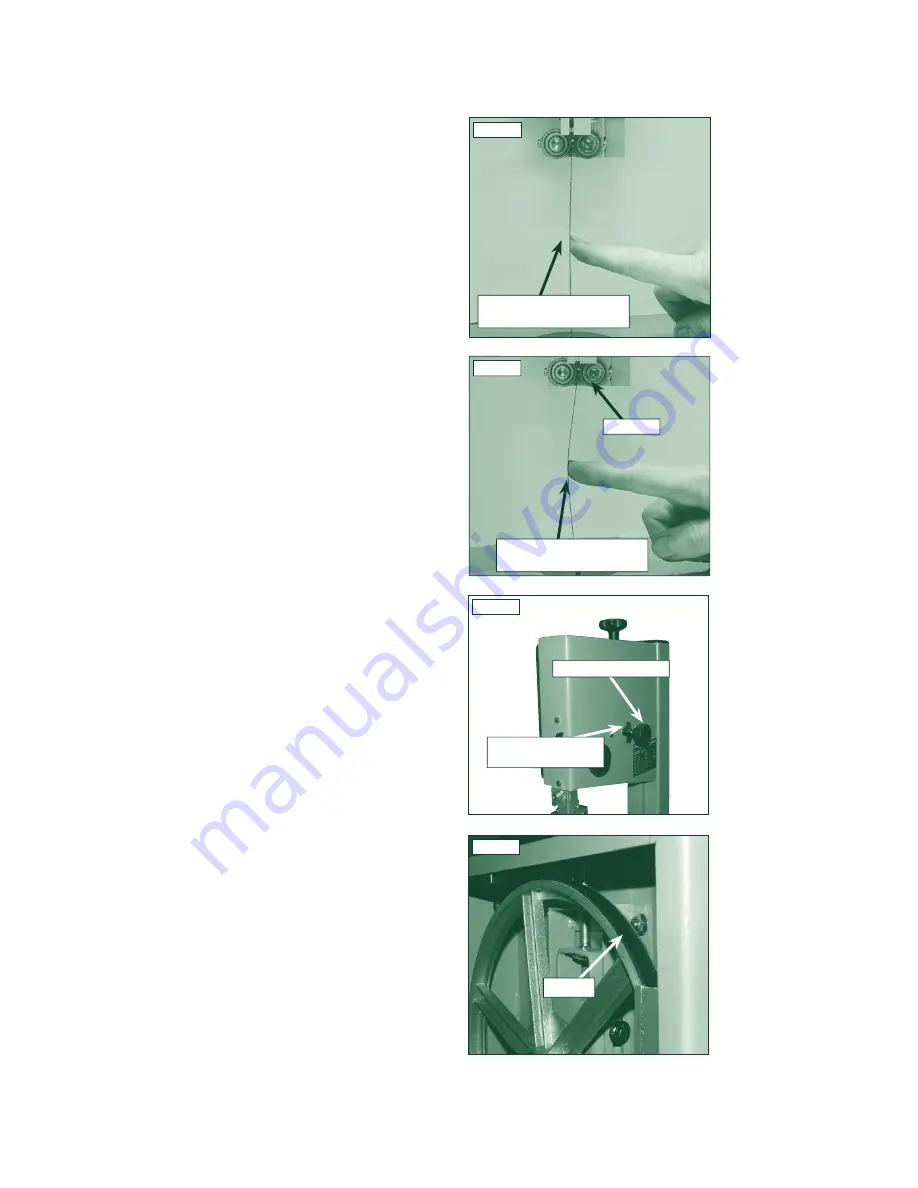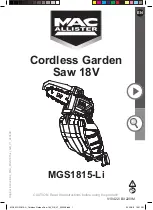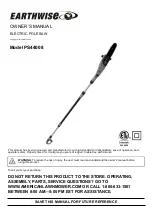
5.4 Tensioning the blade
The blade tensioning knob should be used to increase or
decrease tension. The only accurate way to check a blade is
with a tension meter. These are very expensive so most users
may need another method. We suggest testing the tension by
the amount the blade will deflect sideways. First set the guides
to the maximum height above the table, making sure the saw is
turned off. Push the blade sideways with a reasonable amount
of pressure using the index finger. When pushing with the index
finger a correctly tensioned blade should not move more than a
1/4" sideways
Fig.5.4
. An incorrectly tensioned blade will easily
move more than 1/4" sideways
Fig.5.5
.
However, perhaps the most tried and tested way of blade
tensioning is simply: If the bandsaw is cutting accurately then
the blade is tensioned correctly, if the blade tends to wander
and an accurate cut cannot be achieved then the blade tension
needs adjusting. If adjusting the tension does not solve the
problem the blade may need replacing.
If the machine is to stand idle for a period it is good practice to
slacken tension and re-tension when next using.
5.5 Tracking the Bandsaw blade
Isolate the machine from the supply by unplugging the mains
plug. Set the tracking of the blade before setting the blade
guides. Once the blade is tensioned, track the blade by turning
the upper bandwheel by hand and adjusting the tracking knob
Fig.5.6
. By turning the tracking knob clockwise the blade
will move towards the back of the bandwheel, by turning the
tracking knob anti-clockwise the blade will move to the front of
the bandwheel. The blade should run as close to the centre of
the bandwheel as possible, as shown
Fig.5.7.
On narrow blades
(eg 1/4" and 3/8") it may be necessary to run the blade to the
rear of the bandwheel. After the blade is tracked in the desired
position on the bandwheel, rotate the wheel several more times
by hand without any further adjustment ensuring that the blade
remains in the same position. Once this has been achieved lock
the tracking knob with the winged nut.
NB: It takes a few revolutions of the bandwheel for the effecting
adjustment on the tracking knob to become apparent. To avoid
over-adjusting, make small gradual adjustments on the tracking
knob and revolve the bandwheel on a few times to check the
effect before making further adjustments.
5.
Machine Setting
- cont.
CAUTION!
Before carrying out any adjustments or maintenance ensure
that the machine is isolated and disconnected from the
electricity supply.
Fig.5.6
Fig.5.7
Fig.5.4
CORRECT TENSION ON
THE BLADE
Fig.5.5
INCORRECT TENSION
ON THE BLADE
GUIDES
TRACKING KNOB
TRACKING KNOB
LOCK
BLADE
Summary of Contents for BS250
Page 2: ......
Page 29: ...11 Parts Diagrams cont 28 29 ...
















































